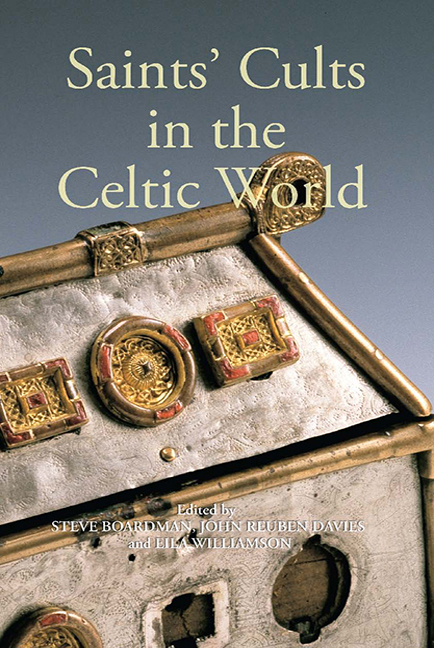Book contents
- Frontmatter
- Contents
- List of Illustrations
- List of Contributors
- Abbreviations
- Editors’ Preface
- 1 Rochester, Hexham and Cennrígmonaid: the movements of St Andrew in Britain, 604–747
- 2 The cults of Saints Patrick and Palladius in early medieval Scotland
- 3 Personal names and the cult of Patrick in eleventh-century Strathclyde and Northumbria
- 4 Bishop Kentigern among the Britons
- 5 Adjacent saints’ dedications and early Celtic History
- 6 Cuthbert the cross-border saint in the twelfth century
- 7 David of Scotland: ‘Vir tam necessarius mundo’
- 8 The cult of Saint George in Scotland
- 9 The cult of the Three Kings of Cologne in Scotland
- 10 The medieval and early modern cult of St Brendan
- General Index
- Miscellaneous Endmatter
7 - David of Scotland: ‘Vir tam necessarius mundo’
Published online by Cambridge University Press: 11 May 2017
- Frontmatter
- Contents
- List of Illustrations
- List of Contributors
- Abbreviations
- Editors’ Preface
- 1 Rochester, Hexham and Cennrígmonaid: the movements of St Andrew in Britain, 604–747
- 2 The cults of Saints Patrick and Palladius in early medieval Scotland
- 3 Personal names and the cult of Patrick in eleventh-century Strathclyde and Northumbria
- 4 Bishop Kentigern among the Britons
- 5 Adjacent saints’ dedications and early Celtic History
- 6 Cuthbert the cross-border saint in the twelfth century
- 7 David of Scotland: ‘Vir tam necessarius mundo’
- 8 The cult of Saint George in Scotland
- 9 The cult of the Three Kings of Cologne in Scotland
- 10 The medieval and early modern cult of St Brendan
- General Index
- Miscellaneous Endmatter
Summary
Famously, James I of Scotland allegedly said that David I's extreme generosity towards the church had rendered him ‘ane sair sanct for the Croune’. David was also explicitly a saint for Walter Bower, who was reliant for material on John of Fordun, who in turn borrowed heavily from a eulogy written shortly after David's death by Aelred of Rievaulx. David's sanctity in these later sources does not, however, simply reproduce the twelfth-century depiction; it is instead adapted to suit the mores and requirements of the later authors. Aelred's David is virtuous and explicitly to be emulated, but he is not a saint. The later medieval reworkings of Aelred's David suggest, however, that he was, as it were, an embryonic saint – that is, that there was sufficient hagiographical ‘raw material’ for him to be subsequently seen as saintly. It is now widely accepted that saints’ vitae can provide valuable insights into the concerns of the cultural and political landscape from which they emanate, and were often written with didactic intent. The eulogy was presented as an exemplar to Henry of Anjou, shortly before he was to become Henry II of England. What kingship was Aelred recommending to the king-in-waiting? What were the pitfalls of which he believed Henry needed to beware? By examining Aelred's virtuous, but – crucially – flawed David, this study points to the wider application of quasi-hagiographical ideas in relation to non-saintly subjects, and suggests that subjects who were not saintly could be equally (and perhaps still more) valuable tools in attempts to shape the behaviour of others.
David I of Scotland (1124–53), youngest son of Malcolm III and Margaret of Scotland, had been reared in the English court, and knighted by Henry I. Shortly after Henry's death in 1135, David embarked on a campaign (ostensibly at least) in support of his niece Matilda's claim to the throne, and to claim Cumberland, Westmorland and Northumberland on his son's behalf. In January 1138, David again invaded Northumberland, in what was generally seen as an unnecessarily brutal campaign, which culminated in the Battle of the Standard. Thereafter, David's reign was relatively peaceful, and he furthered the institutionalisation of government, law and church reform on which much of his subsequent good reputation centred. He died at Carlisle, having designated his grandson heir to the throne.
- Type
- Chapter
- Information
- Saints' Cults in the Celtic World , pp. 130 - 145Publisher: Boydell & BrewerPrint publication year: 2009



